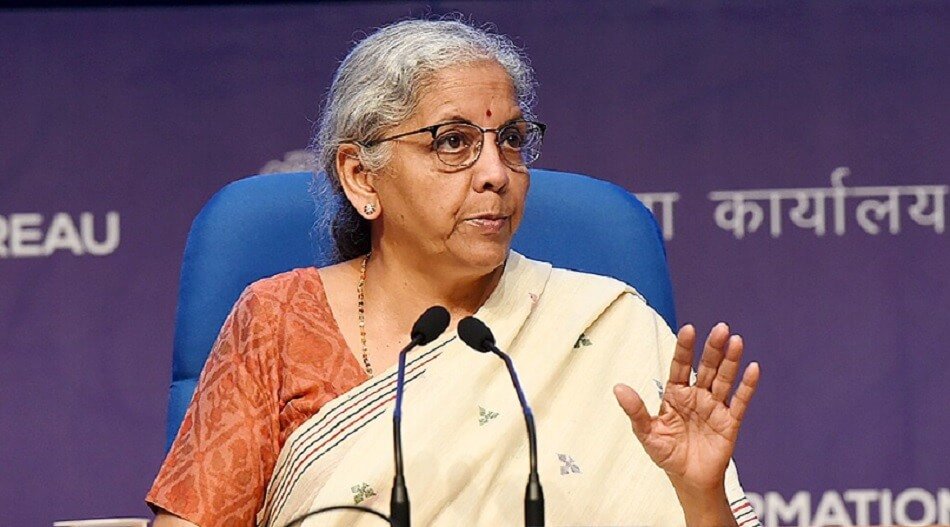Budget 2024: FM Sitharaman could significantly boost farm sector schemes
The government is likely to significantly increase allocation for key farm sector schemes and push credit in the interim budget to boost the rural economy, as agricultural growth is expected to slow to 1.8% in 2023–24 from 4% the previous year. Finance Minister Nirmala Sitharaman is scheduled to present the interim budget on February 1, which will be the Narendra Modi-led government’s final major economic document before the 2024 Lok Sabha elections.
In the 2019 interim budget, ahead of the 2019 general elections, the government announced PM-Kisan Samman Nidhi, which provides small farmers with up to ₹6,000 in financial assistance each year. In an election year, it is expected that the amount of assistance will increase in the upcoming budget.
Furthermore, the government is expected to announce a significant increase in the agricultural credit target to ₹ 22–25 lakh crore for the next fiscal year, ensuring that every eligible farmer has access to institutional credit. The government has set an agri-credit target of ₹ 20 lakh crore for the current fiscal year.
In the current fiscal year, approximately 82% of the agri-credit target of ₹ 20 lakh crore has been met until December 2023. Also Read | Telangana CM urged Godrej Agrovet to invest in real estate and agri sector
Chandrajit Banerjee, Director General of the industry body CII, stated that agriculture and rural segments should be prioritized in the interim budget to promote inclusive growth. “Warehousing should be encouraged in agriculture to reduce waste. The coverage of electronic negotiable warehouse receipts (eNWRs) must be expanded, and we have recommended that they be used for access to finance, trading, and trade settlement,” he stated. The industry chamber also advocated for the direct distribution of fertilizer subsidies to farmers in the form of cash transfers. Gaurav Manchanda, Founder and MD of Organic World believes that India requires budgetary support and stronger Farmer Producer Organizations (FPOs) in order to optimize operations and capitalize on emerging market opportunities.
“Higher farm insurance outlays, greater investment in rural employment schemes, better irrigation facilities, and improved rural infrastructure can make a huge difference,” he added.
In the Union Budget for 2023–24, Sitharaman allocated ₹ 1.25 lakh crore to the Ministry of Agriculture and Farmers’ Welfare, which includes Agricultural Education and Research. The allocation increased dramatically from ₹ 27,662.67 crore in 2013–14.
M. K. Dhanuka, Managing Director of Dhanuka Agritech, expects the government to continue its agricultural promotion initiatives in the upcoming interim budget.
“Specifically, we anticipate an increase in PM-Kisan Samman Nidhi and increased rural spending, which may result in larger allocations for existing rural schemes. Improving rural infrastructure is likely to remain a top government priority, he said.
In the previous budget, ₹60,000 crore was set aside for the Pradhan Mantri Kisan Samman Nidhi. As of November 30, 2023, more than ₹ 2.81 lakh crore had been distributed to more than 11 crore farmers via Direct Benefit Transfer (DBT) under the scheme.
Ajai Rana, Chairman of the Federation of Seed Industry of India (FSII) and CEO of Savannah Seeds, highlighted the policy environment that encourages foreign direct investment in the seed sector.
“There is no denying that more innovation is required to increase productivity and income for farmers. In this context, a policy that encourages the protection of intellectual property and foreign investment would be useful, as this will encourage more players to invest in India, benefiting our economy, farmers, and overall productivity.” Rana said.
Also Read | India’s current agri exports $ 50 billion expected to double by 2030:Sunil Barthwal
P C Musthafa, Global CEO of iD Fresh Food, believes that the government should prioritize promoting food safety standards and making significant investments in technology.
“As a proud ‘Make in India’ brand, our hope is for the budget to become a catalyst for innovation, streamlining regulatory processes, and fostering the growth of the food manufacturing sector,” he went on to say.
The CII has also suggested that the food and fertilizer subsidies, which make up the majority of the subsidies, be rationalized through better targeting and efficient utilization without affecting deserving beneficiaries.
The food subsidy program is currently based on data from the ‘Household Consumer Expenditure Survey 2011–12’, according to the industry body, but with economic growth and declining poverty, more recent data is needed for better targeting.


















Add Comment